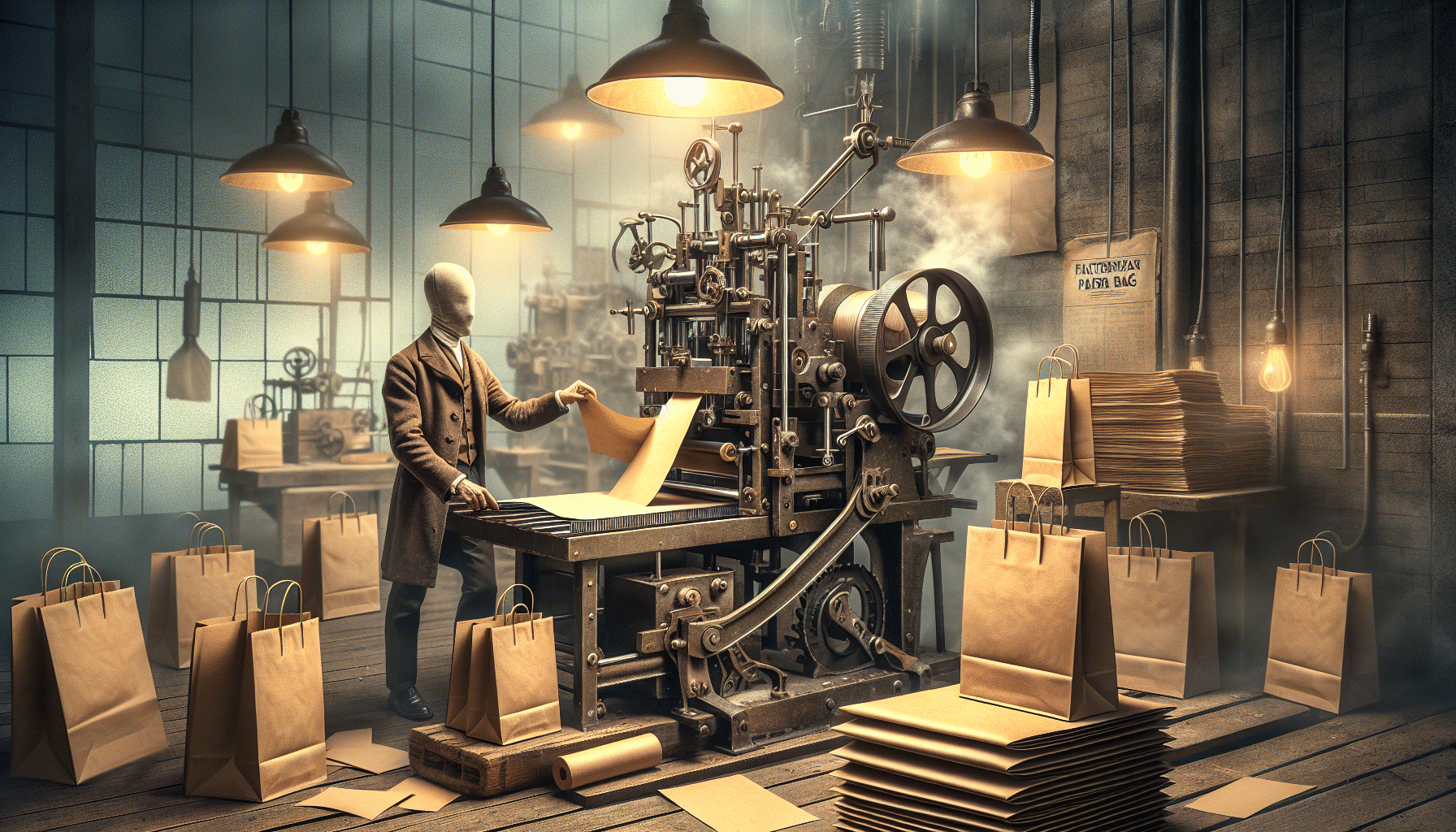From Trees to Shelves: The Life of a Paper Bag
Get the scoop on how paper bags are made. From kraft paper to the finished product, understand the production process like never before.
Last Updated on 06/10/2025
Welcome! We’re here to shed light on the fascinating process behind the creation of common paper bags. Regardless if your interest is academic, for research purposes, or you’re considering opting for paper bags as a green packaging solution, we’ve got you covered. How about we get right into discovering the materials and intricate steps that transform kraft paper into the handy paper bags we use daily? Exciting insights await in the following sections.
Key takeaways
- Paper bags came into existence in 1852 and are crafted from robust materials like kraft and brown paper, ideal for making sturdy bags.
- The transformative process includes cutting paper to size, then folding and glueing using specially designed machinery in the manufacturing process.
- Multi-wall paper bags form the future of paper packaging with several layers for added strength and durability, championing the cause for environmental sustainability.
The origin of the paper bag & the materials used

If you could time-travel back to 1852, you’d witness a revolution in the retail world. It was the birth year of the paper bag, the marvel of convenience that we all know and love today. And the proud parent? An inventive chap named Francis Wolle, who sure knew a thing or two about convenience.
Now when it comes to paper bags, the heart of the process is, well, paper. Kraft paper usually plays the starring role. It’s made from paper pulp that’s treated with a solution to strengthen it, hence those sturdy paper bags. Brown paper is also a common player, often seen gracing the surface of paper bags with handles.
| Year | Developments | Usage/Application |
|---|---|---|
| 1852 | Birth of the paper bag by Francis Wolle | Initial uses in retail industries |
| Mid 20th Century | Introduction of kraft and brown paper | Expanded use in shopping, food packaging |
| 21st Century | Adaption of multi-wall paper bag technology | Industrial use and for heavier hauls |
Manufacturing of industrial paper bags
Here’s a soundtrack for your imagination – the rhythmic hum of large machines orchestrating the birth of industrial paper bags. Ingeniously designed machinery, from the union paper bag machine company, where large rolls of kraft paper dance through the machinations, transforming into the finished bag that we love.
Now imagine this: the machine cuts the paper to size, twice the required height of the finished bag to create that hollow space (to house your shopping delights of course!) A dance of the machine follows, folding and glueing the edges with an adhesive.
Folding and shaping: Crucial steps in the paper bag manufacturing process
If you thought folding was just for origami enthusiasts, you’re in for a surprise. It’s key to a paper bag’s marriage of form and function. Every groove and crease in a paper bag owes itself to precision folds. Our paper bag isn’t just made on large machines, you see, it’s crafted.
Think about the bottom of the bag for a minute. That stable base holding your fruits? Thank folds. That wide mouth gulping up your groceries? Thank folds. The results are magnificent – those precise folds create a bag that stands tall, ready to serve its purpose.
From plain to brown: The journey of a brown paper bag
The modest brown paper bag enters the process as an ordinary sheet of kraft paper. It then takes a mighty turn during manufacturing – getting dyed brown. Why brown, you ask? Well, it gives the bag its characteristic look and feel. And who wouldn’t like a uniqueness upgrade?
And remember, kraft paper bags aren’t quite the strangers they might seem. They’re just brown paper bags in disguise, only skipping the dyeing process and flaunting their natural light brown shade.
| Type of bag | Material | Distinguishing features | Applications |
|---|---|---|---|
| Kraft paper bag | Kraft paper | Natural light brown colour, simple design | General shopping, packaging |
| Brown paper bag | Brown paper (dyed kraft paper) | Dark brown colour, variety of sizes | Food packaging, retail |
| Multi-wall paper bag | Kraft paper with additional layers | Extreme strength and durability | Heavy-duty applications, industrial use |
The use of paper bags & the quest for sustainability
Now let’s talk a bit about why we’ve been all gaga over paper bags. From packaging sandwiches for your picnics to being your reliable grocery carrier, the humble paper bag has multi-wall paper bag skills. And here’s a head-turner – they’re part of the green revolution! Kraft paper or brown, each paper bag is a step towards environmental bliss.
Looking for them to be a part of your home? You might want to land your cart on this helpful site. Remember, when you use a paper bag instead of its plastic cousin, you’re casting a vote for Mother Nature!
Multi-wall paper bags & paper packaging: The way forward
Welcome to the future where multi-wall paper bags strut around with pride! Built like a fort with several layers, this variant of our beloved paper bag is all about strength. Picture a single layer paper bag, now multiply the strength, and you’ve got a winner!
They’re manufactured slightly differently from conventional bags. The layering provides added strength, so they’re the go-getters you’d want in tow for your heftier hauls. And if this piqued your curiosity, this extensive resource pool is ready to satiate your thirst for knowledge!

So, here we stand, at the end of our enlightening tour into the world of paper bags. From their humble beginnings, the use of kraft and brown paper, to their complex manufacturing process, we’ve discussed it all.
Be it the simplicity of the brown paper bag, or the strength within the layers of a multi-wall paper bag, each holds a story. A tale waiting to be discovered in your next grocery haul or takeaway meal!
Frequently Asked Questions
What kind of paper is used in the production of paper bags?
Typically, paper bags are made of kraft paper that’s sourced from paper pulp. This pulp is treated to enhance its strength. The alternative is brown paper, also common in paper bag production.
What role does a machine play in crafting a paper bag?
In manufacturing industrial paper bags, machines play a key role. They cut large rolls of kraft paper to size, factoring in the required height of the finished bag, then fold and glue edges together.
Can paper bags be made from recycled paper?
Yes, paper bags can be made from recycled paper. This practice furthers the environmental benefits of using paper bags, reducing the need for new materials and contributing to sustainability efforts.
How are multi-wall paper bags different from standard paper bags?
Multi-wall paper bags are designed with several layers for added strength. Each layer multiplies the strength of the bag, making it a stronger alternative to the conventional single-layer bag.
Are there different types of paper bags?
Indeed, there are various types of paper bags. The range includes coated and uncoated bags, single-layered and multi-wall paper bags, as well as specific types like valve bags, square-bottomed bags, and sacks made for industrial uses.










